Philippine Traditional Clothing | #Monomad Challenge
Hi everyone, it is my first time in sharing some black and white visuals and here's my entry for the #monomad challenge.
The visuals I want to share with you are the shots during our 29th Year Anniversary Church Celebration. This year celebration, we used the theme Philippine tradional clothing.

Here is my picture with my Husband. I wear the "Maria Clara" theme dress while my husband wear a short sleeve barong embroidered with traditional patterns. I also used a fan which also symbolizes a woman's modesty. It was also used in ancient times to express the feelings of a young lady that she couldn't say to others. My husband, on the other hand, has a cane in his hand that shows elegance, respectability and gentlemanliness.

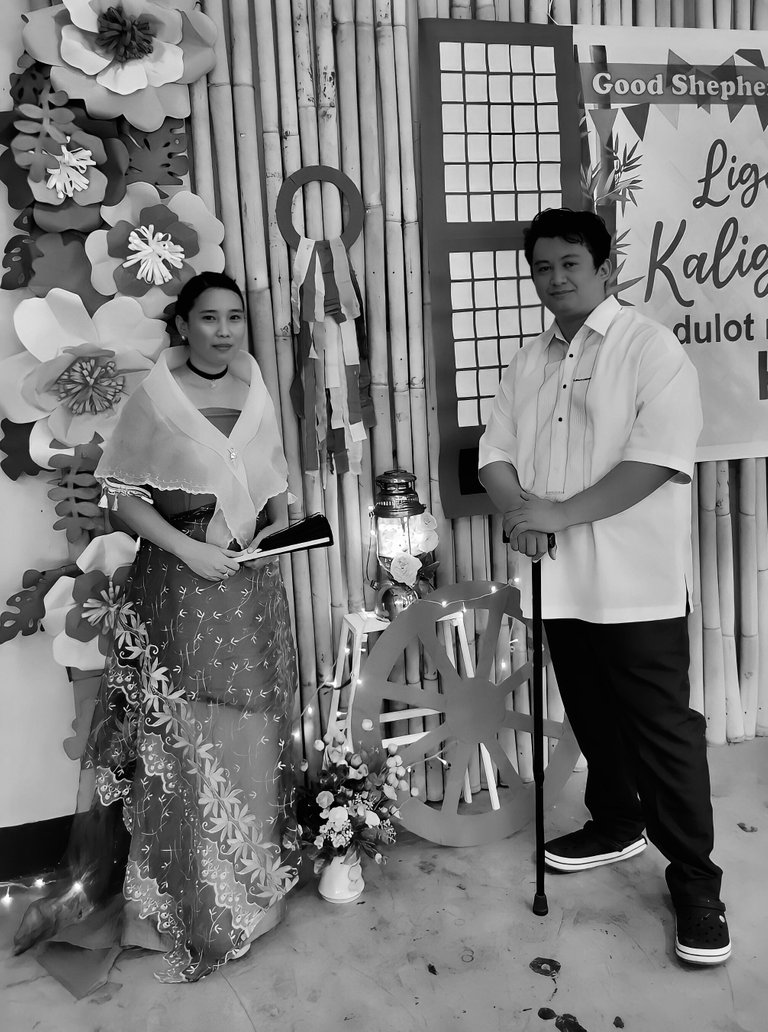
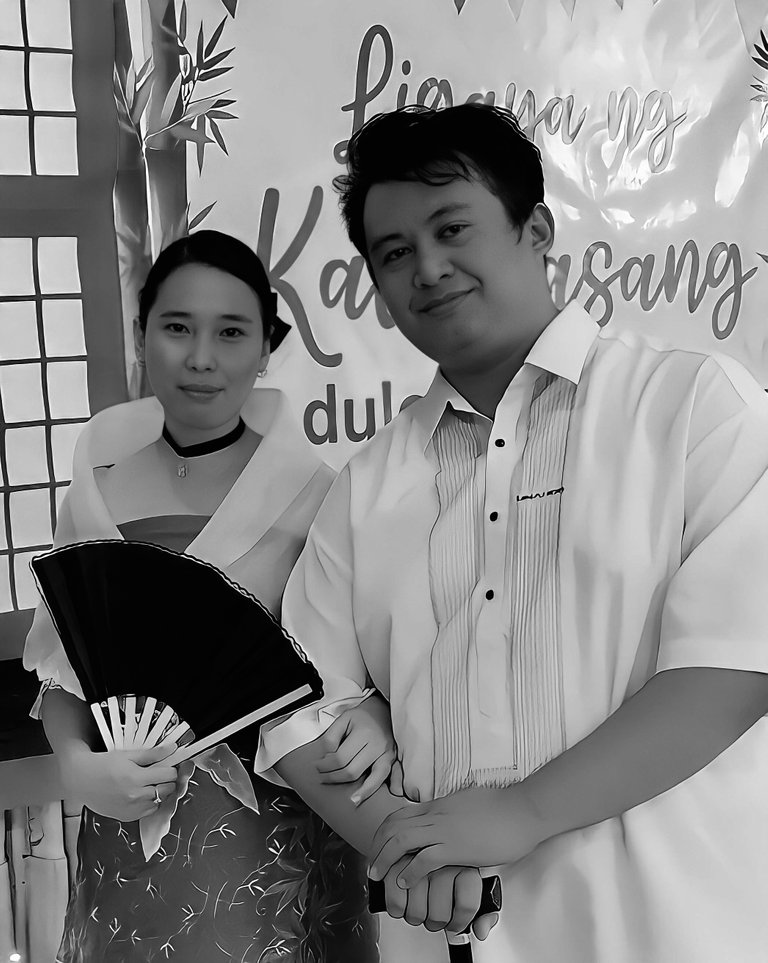
These are the photos with my family and friends who participated in the said celebration.


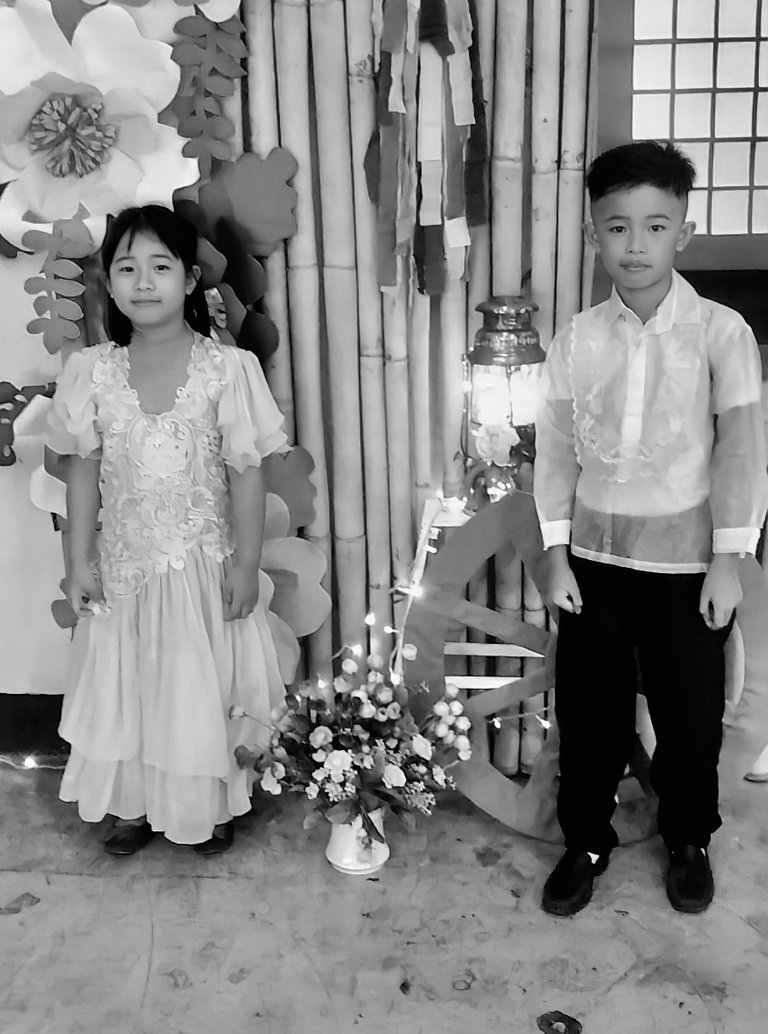
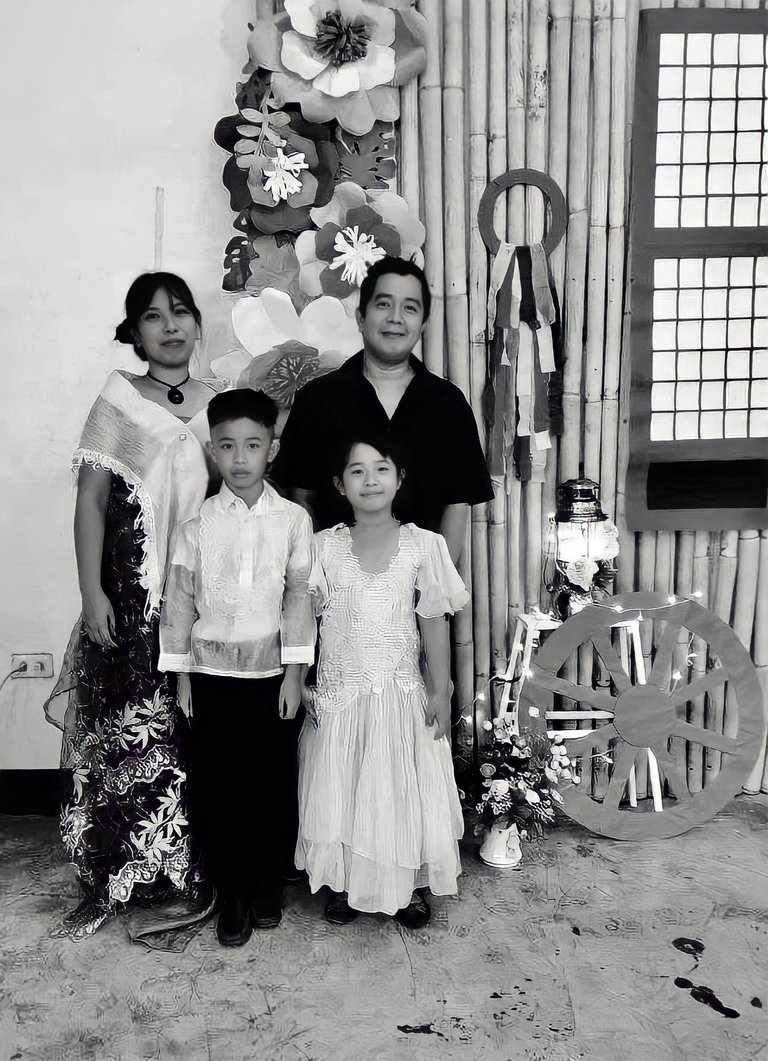



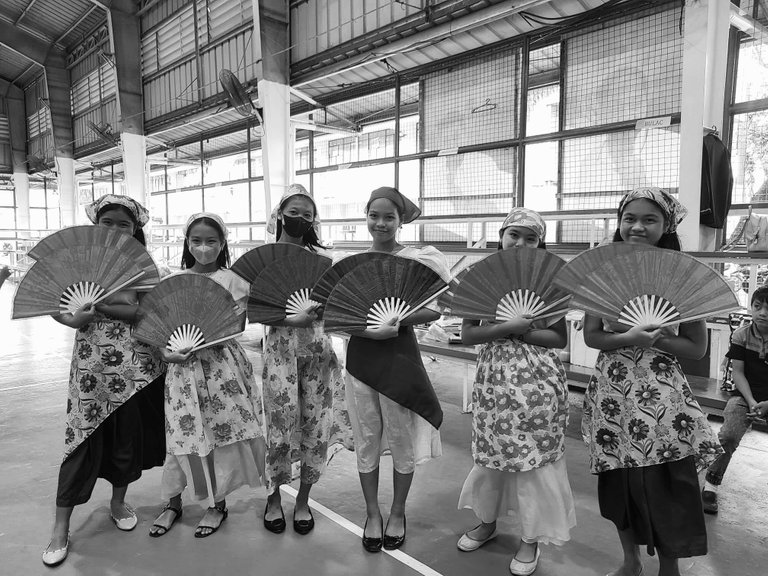
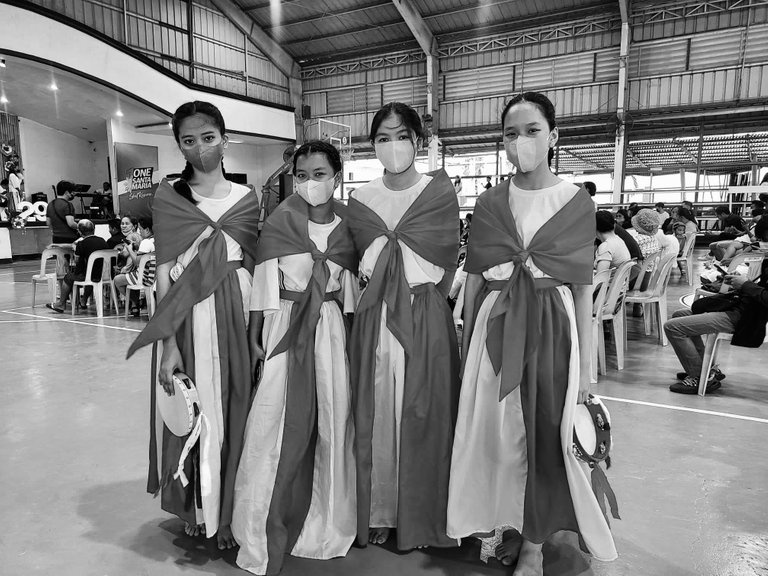
Trivia about Philippine Traditional Clothing
Barong Tagalog
It is a formal garment, often made from thin fabric and richly embroidered which is used both by men and women. It looks like a tunic or shirt with long sleeves and is worn over a usual shirt. Filipino men often wear barong tagalog with a Chinese collarless shirt called "camisa de Chino". It is ornamented or embroidered with traditional patterns. And it can be made from various fabrics, but mostly natural: like pina fabric (hand-woven from pineapple leaf fibers), jusi fabric (machine-woven from banana silk) and banana fabric (hand-woven from banana fiber).
Source
Baro at Saya
In the past, it used to be just a short blouse with long sleeves and a long wrap around skirt. But today this national costume can be very ornate and beautiful.
The very popular among Filipino one is called "Maria Clara dress". This is a dress of Filipino national novels heroine Dr. Jose Rizal. It consists of a collarless blouse, waist-long and with bell sleeves; a bubble-shaped long skirt; a stiff, neck-covering pañuelo (a scarf); and a hip-hugging, knee-long overskirt.
Another popular garment in the Philippines is a dress called "terno". It evolved from baro at saya but turned into a dress. Terno has butterfly sleeves, it is always long. There are plenty of designs and styles of a terno. This dress is mostly used for special occasions.
Source
Philippine traditional clothing is somewhat bright, fancy and wonderful. Filipino individuals lived under the control of different nations for a really long time. That is the reason our public clothing was shaped affected by various societies and got a portion of their elements. US, Spain and Japan biggestly affected the customary apparel of the Philippines. In any case, all things considered Filipino people dress is extremely remarkable, credible and, surprisingly, ancestral, in the event that we can say as much.
What we wear is something beyond material sewn together to protect us, our clothes are a signifier of our character and culture. We used clothing as a way to convey status, celebrate significant occasions and show unity among a lot more things.
I hope you are happy to the visuals I share today and I will be happy if you like this latest article. Have a pleasant day everyone!